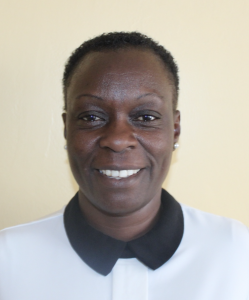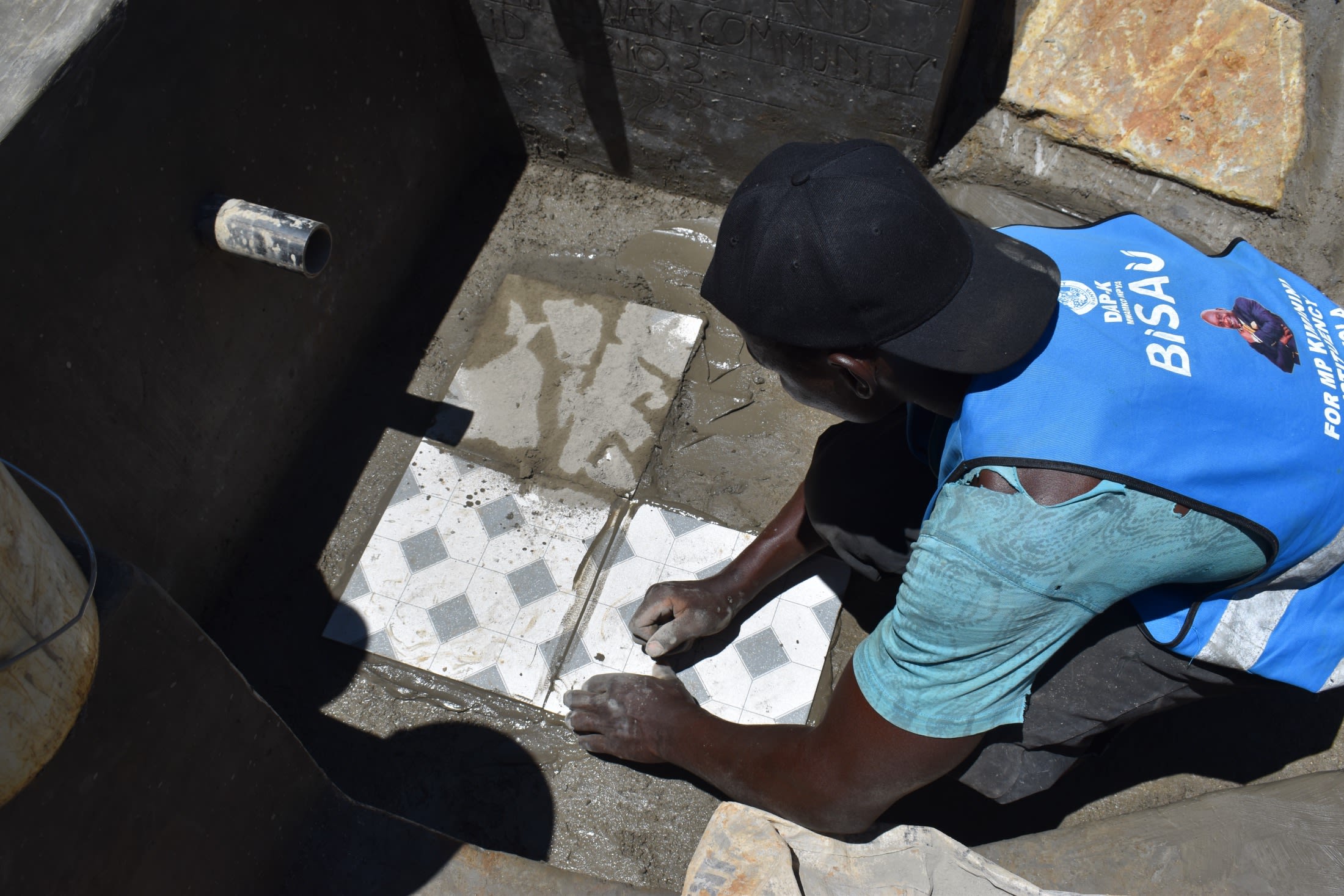The 140 community members who live in Enyakwaka rely on Eviratsi Spring to meet their daily water needs for drinking, cooking, cleaning, and more, yet, collecting water from the spring is not an easy task. An attempt was made to protect the spring in the past, but the spring still faces several challenges.
The spring box is wide open to contamination, and the water point is flooded because it doesn't drain properly. To collect, people must step into muddy ankle-deep water, trying not to slip while navigating dirt, rocks, and debris on the spring floor. To fill their water jugs, they submerge them into the dirty water and place them under the improvised collection pipes. And without stairs, access in and out of the spring is tricky, especially when it rains.
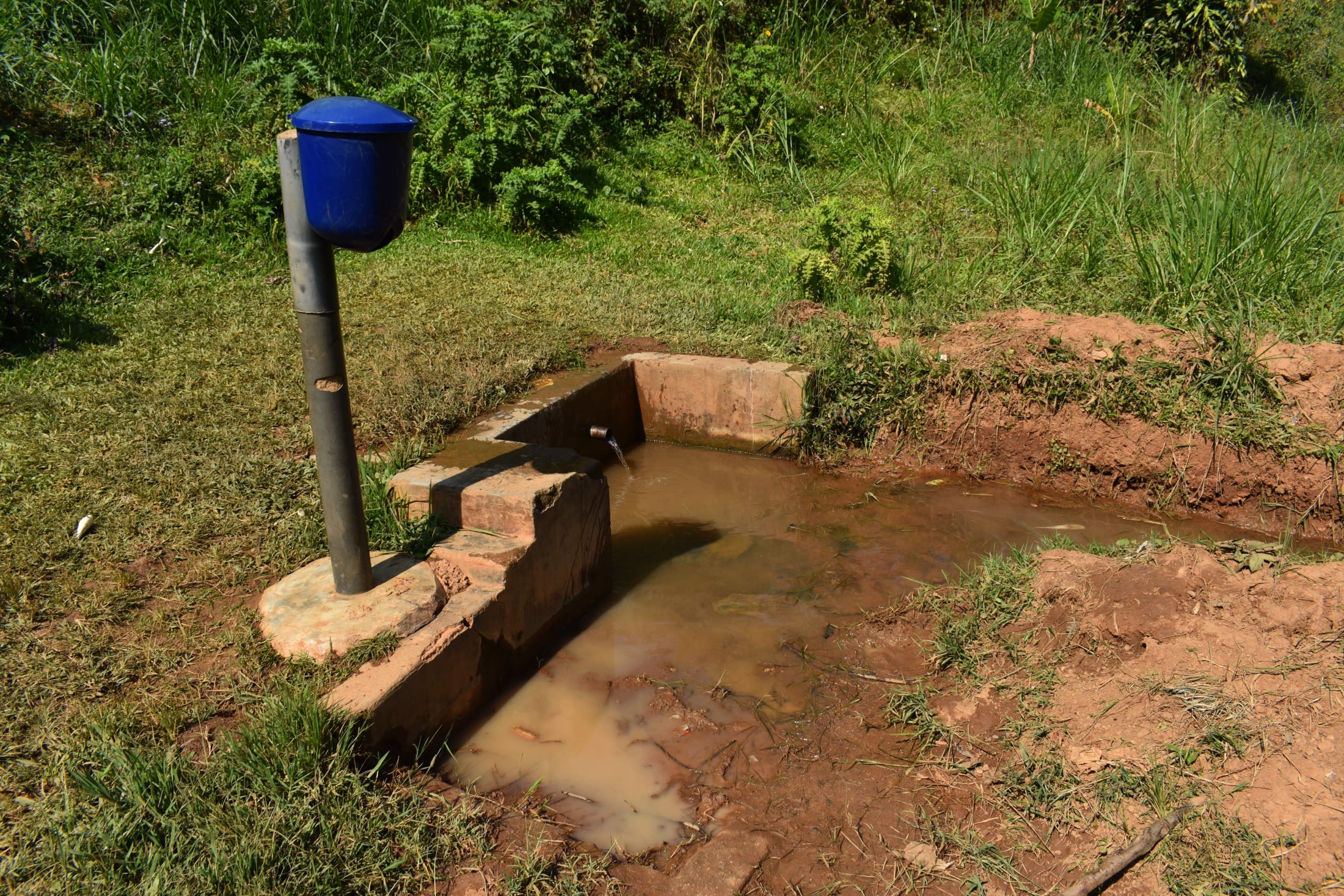
Forty-six-year-old farmer Anne Awinja shown below at the spring, shared, "The current water affects me personally because I take a lot of time queuing in the spring. Also, I am forced to step inside the water so that I can fetch water. This leads to contamination of the water hence increased cases of waterborne diseases."
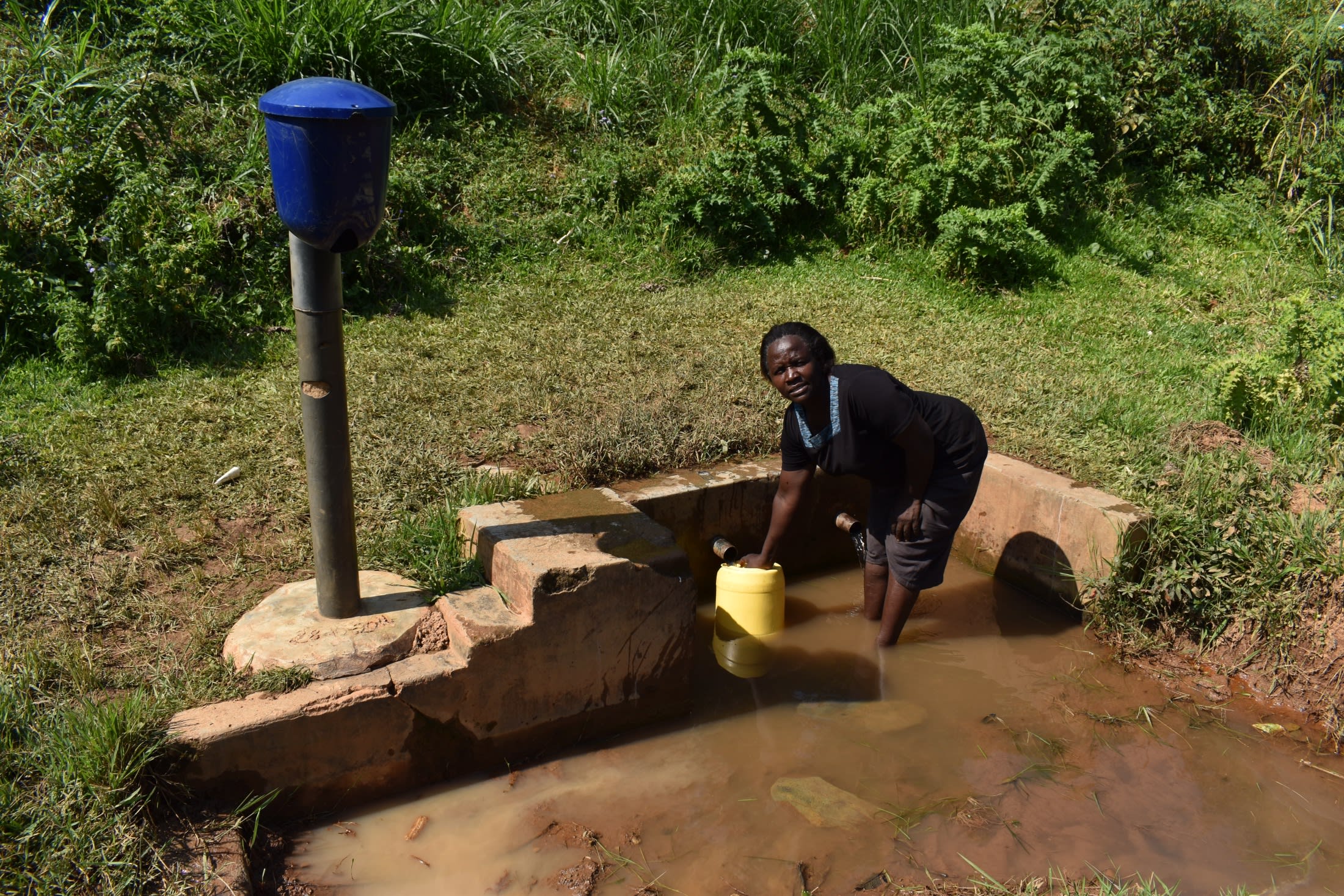
Because the spring is not operating optimally, it takes a long time for people to draw water, evidenced by the long queues throughout the day, which begin first thing in the morning and continue long into the evening.
Due to the delays, community members either do not have time to accomplish their other important tasks for the day or they must forego collecting water until another time, exacerbating their water issues.
“When water comes from improved and more accessible sources, people spend less time and effort in physically collecting it, meaning they can be productive in other ways.” - WHO
"I cannot fetch water in the early morning because I will be late to get to school. So I normally go for water late [in the] evening, but sometimes I find many people, which makes me do my homework late. This affects my concentration on my academic work," said 12-year-old Maria M., seen at the spring below.
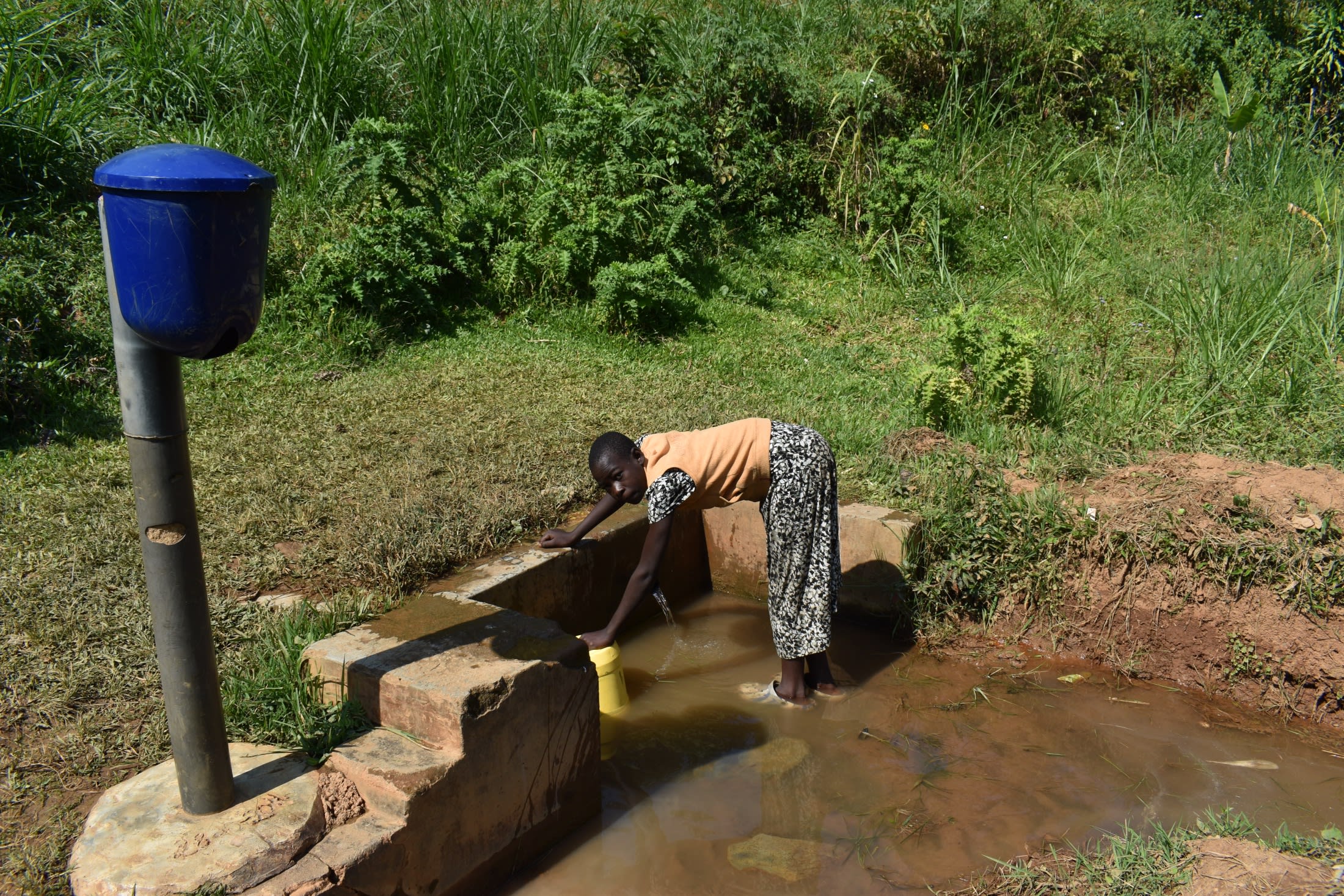
By protecting this spring, community members will be able to quickly and safely access water and should be able to accomplish their daily tasks more easily.
What We Can Do:
Spring Protection
Protecting the spring will help provide access to cleaner and safer water and reduce the time people have to spend to fetch it. Construction will keep surface runoff and other contaminants out of the water. With the community’s high involvement in the process, there should be a good sense of responsibility and ownership for the new clean water source.
Fetching water is a task predominantly carried out by women and young girls. Protecting the spring and offering training and support will, therefore, help empower the female members of the community by freeing up more of their time and energy to engage and invest in income-generating activities and their education.
Training on Health, Hygiene and More
To hold training, we work closely with both community leaders and the local government to approve small groups to attend training. We ask community leaders to invite a select yet representative group of people to attend training who will then act as ambassadors to the rest of the community to share what they learn.
The training will focus on improved hygiene, health, and sanitation habits in this community. With the community’s input, we will identify key leverage points where they can alter their practices at the personal, household, and community levels to affect change. This training will help to ensure participants have the knowledge they need about healthy practices and their importance to make the most of their water point as soon as water is flowing.
Our team of facilitators will use a variety of methods to train community members. Some of these methods include participatory hygiene and sanitation transformation, asset-based community development, group discussions, handouts, and demonstrations at the spring.
One of the most important issues we plan to cover is the handling, storage, and treatment of water. Having a clean water source will be extremely helpful, but it is useless if water gets contaminated by the time it is consumed. We and the community strongly believe that all of these components will work together to improve living standards here, which will help to unlock the potential for these community members to live better, healthier lives.
We will then conduct a small series of follow-up trainings before transitioning to our regularly scheduled support visits throughout the year.
Training will result in the formation of a water user committee, elected by their peers, that will oversee the operations and maintenance of the spring. The committee will enforce proper behavior around the spring and delegate tasks that will help preserve the site, such as building a fence and digging proper drainage channels. The fence will keep out destructive animals and unwanted waste, and the drainage will keep the area’s mosquito population at a minimum.




 Protected Spring
Protected Spring
 Rehabilitation Project
Rehabilitation Project










